
The automotive industry, much like a seasoned poker player, often holds its cards close, making predictions a notoriously tricky business. We’ve all seen the grand pronouncements of market analysts, the high-octane marketing blitzes, and the enthusiast forums buzzing with hype, only for some highly anticipated models to fizzle out like a damp firecracker on the sales charts. It’s a harsh reality that even the biggest budgets and most brilliant minds can’t always guarantee a hit. But then, there are the quiet game-changers, the underdogs, the vehicles that sneak onto the scene with minimal fanfare, yet somehow manage to defy every expectation, becoming not just commercial successes, but bona fide legends.
These are the cars that didn’t just move units; they shifted paradigms. They became cultural icons, reshaped entire segments, or simply proved that consumers, when given the right combination of unique features, unbeatable value, or revolutionary technology, will vote with their wallets in ways nobody saw coming. Whether it was shrewd pricing, impeccable timing, groundbreaking design, or a sheer, uncanny ability to tap into unspoken desires, these vehicles managed to outmaneuver the forecasts and leave an indelible mark on the industry. They offer a masterclass in market dynamics and the unpredictable nature of consumer preferences.
Today, we’re not just looking at cars that sold well; we’re diving deep into the fascinating stories of twelve (Editor’s Note: Originally twelve, but we found even more incredible examples to share!) automotive triumphs that not only sold in droves but outpaced every single forecast thrown their way. From eco-conscious innovators to reimagined muscle cars and the backbone of the working world, these machines collectively spun the narrative, teaching us valuable lessons about innovation, resilience, and sometimes, just plain luck in being in the right place at the right time. Let’s peel back the layers and celebrate these unexpected superstars.
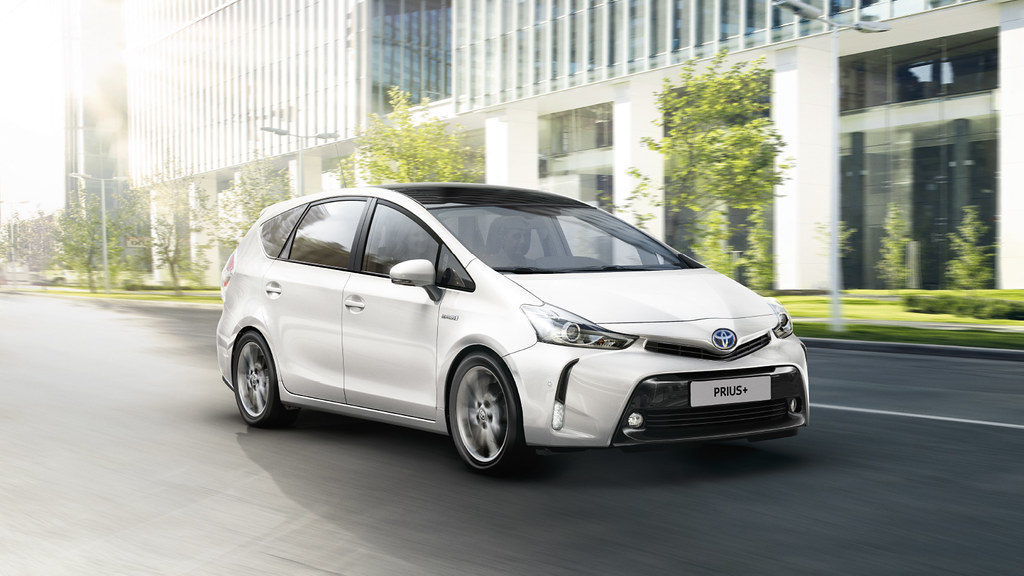
1. **Toyota Prius**When the Toyota Prius first rolled onto the scene in the late 1990s, the very concept of a hybrid vehicle felt like something plucked from a sci-fi movie. Many seasoned industry insiders, and let’s be honest, a fair few enthusiasts, looked at a car that prioritized silent electric motors and fuel efficiency over raw horsepower with a healthy dose of skepticism. The idea of mass-market buyers embracing such a departure from traditional performance attributes seemed, to many, a bridge too far. Yet, despite the nascent environmental awareness of the early 2000s, few could have truly predicted the Prius’s meteoric rise to becoming the undisputed benchmark for hybrid technology.
Toyota’s audacious decision to double down on a mass-market hybrid, constantly refining and improving the Prius’s cutting-edge technology, was a gamble that paid off spectacularly. This wasn’t just about being first; it was about being relentlessly better. The Prius’s unparalleled combination of stellar fuel economy, rock-solid Toyota reliability, and its utterly distinctive, almost futuristic design, struck a chord with a rapidly growing demographic of eco-conscious buyers. It offered a practical, affordable, and crucially, available solution at a time when other manufacturers were still merely dabbling in hybrid concepts, hesitant to fully commit.
Over the years, the Prius didn’t just sell; it became a synonym for ‘hybrid car,’ the go-to choice for anyone looking to reduce their carbon footprint without sacrificing the everyday convenience of a conventional vehicle. This well-earned reputation propelled Toyota to sell millions upon millions of units worldwide, obliterating initial sales estimates. More than just a sales phenomenon, the Prius became a silent but powerful force, nudging the entire automotive industry towards electrification, forcing even the most reluctant competitors to play catch-up with their own hybrid and, eventually, fully electric offerings.
But the Prius’s success wasn’t solely about its innovative technology. Toyota skillfully marketed it as a forward-thinking, intelligent choice, without alienating traditional buyers. Its surprisingly spacious interior, perfectly adequate performance for daily driving, and Toyota’s bulletproof reputation for dependability forged an incredibly compelling package. As global gas prices gyrated wildly and environmental regulations tightened their grip, the Prius remained an unyielding contender. Its continuous evolution, featuring enhanced battery systems and improved drivability across newer models, ensured demand never waned. This enduring appeal demonstrated how a car initially perceived as niche could, with the right strategy and unwavering commitment, morph into a mainstream behemoth.
Beyond the numbers, the Prius cultivated an entirely new type of car buyer—one who valued sustainability and efficiency alongside traditional metrics like cost and comfort. Its outsized sales figures were a clear signal to other manufacturers, prompting massive investments in hybrid and electric platforms and unequivocally accelerating the industry’s inexorable shift towards an electrified future. Toyota’s bold bet on the Prius didn’t just redefine what a mass-market car could be; it laid foundational groundwork for the entire modern electric vehicle era. It was a truly surprising success story, a vehicle that far exceeded mere expectations to actively shape the future of automotive trends, proving that practicality and innovation could be incredibly cool.
Car Model Information: 2018 Toyota Prius Four
Name: Toyota Prius
Caption: Fifth generation Prius (XW60)
Manufacturer: Toyota
Production: December 1997 – present
ModelYears: 2001–present (US)
Class: ubl
BodyStyle: unbulleted list
Layout: unbulleted list
Sp: uk
Categories: 2000s cars, 2010s cars, 2020s cars, All-wheel-drive vehicles, All Wikipedia articles in need of updating
Summary: The Toyota Prius ( PREE-əss) (Japanese: トヨタ・プリウス, Hepburn: Toyota Puriusu) is a car produced by Toyota since 1997 over five generations. The Prius has a hybrid drivetrain, which combines an internal combustion engine and an electric motor. Initially offered as a subcompact four-door saloon, it has been produced only as a compact five-door liftback since 2003.
The Prius was developed by Toyota to be the “car for the 21st century”; it was the first mass-produced hybrid vehicle, first going on sale in Japan in 1997 at all four Toyota Japan dealership chains, and subsequently introduced worldwide in 2000.
In 2011, Toyota expanded the Prius family to include the Prius v, an MPV, and the Prius c, a subcompact hatchback. The production version of the Prius plug-in hybrid was released in 2012. The second generation of the plug-in variant, the Prius Prime, was released in the U.S. in November 2016. The Prius family totaled global cumulative sales of 6.1 million units in January 2017, representing 61% of the 10 million hybrids sold worldwide by Toyota since 1997. Toyota sells the Prius in over 90 markets, with Japan and the United States being its largest markets.
Get more information about: Toyota Prius
Buying a high-performing used car >>>
Brand: Toyota Model: Prius
Price: $18,999 Mileage: 84,118 mi.
Read more about: Hybrid Car Battery Woes: An In-Depth Guide for Savvy Owners to Avoid Thousands in Repairs

2. **Ford Mustang (2015 Model)**The Ford Mustang has always been more than just a car; it’s an American institution, a rumbling, roaring icon of muscle and freedom. But when the sixth generation was unleashed in 2015, the automotive world held its breath. Could this venerable nameplate, steeped in over half a century of legend, truly keep pace with a radically shifting market? The rise of SUVs and crossover vehicles had effectively swallowed the sales charts whole, making muscle cars feel increasingly like a cherished, albeit niche, segment. Critics, ever eager to prognosticate, openly wondered if a new retro-inspired Mustang could possibly rope in fresh buyers beyond its fiercely loyal, but aging, fanbase.
Well, buckle up, because the 2015 Mustang absolutely detonated those doubts, proving to be a standout success that didn’t just surpass expectations, but blew them clean out of the water – and not just in the U.S., but globally. Ford’s masterstroke was to offer a Mustang that felt thoroughly modernized, packing updated technology, genuinely improved performance, and a sleek, refreshed design. This careful alchemy allowed it to capture the imagination of both grizzled old enthusiasts yearning for heritage and a younger generation of buyers hungry for something fresh and exciting.
This new pony car skillfully retained its classic muscle car essence, that undeniable, raw American power, while seamlessly incorporating contemporary features like fuel-efficient turbocharged engines and cutting-edge infotainment systems. This masterful blend of tradition and innovation made it irresistibly appealing to a far broader demographic than many had ever dared to predict. And let’s not forget the price tag: the Mustang’s relatively affordable entry point, especially when stacked against other sports cars of its caliber, significantly widened its market appeal, putting those dreams of muscle car ownership within reach for more people.
Perhaps the most jaw-dropping outcome was the Mustang’s utterly unexpected international popularity. Ford, with a bold and strategic move, actively pushed the car outside the United States, daring to enter markets where traditional muscle cars had previously held about as much sway as a feather in a hurricane. Its resounding success in Europe, Asia, and even parts of the Middle East genuinely astonished industry watchers and sent sales figures skyrocketing. This global triumph vividly demonstrated how a potent brand, when combined with smart, strategic updates and a willingness to embrace new markets, could not only revitalize a model some thought was past its prime but also forge a new legend.
The 2015 Mustang’s sales success wasn’t just a win for Ford; it was a powerful statement that muscle cars still have a vital, thriving place in a rapidly evolving automotive landscape. It proved, beyond a shadow of a doubt, that skillfully blending heritage with modernity, when coupled with aggressive and intelligent marketing, could yield results far beyond even the most optimistic projections. Ford’s gamble on the new Mustang not only reinvigorated the model’s legacy but also laid crucial groundwork for subsequent Mustang variants, including more powerful and even electric versions, ensuring that the legend continues to gallop into the future. It’s a testament to the fact that passion, performance, and a dash of pragmatism can still win hearts and minds, proving that America’s iconic pony car still had plenty of kick left.
Read more about: Buyer Beware: 14 SUVs That Could Drain Your Wallet with Costly Repairs
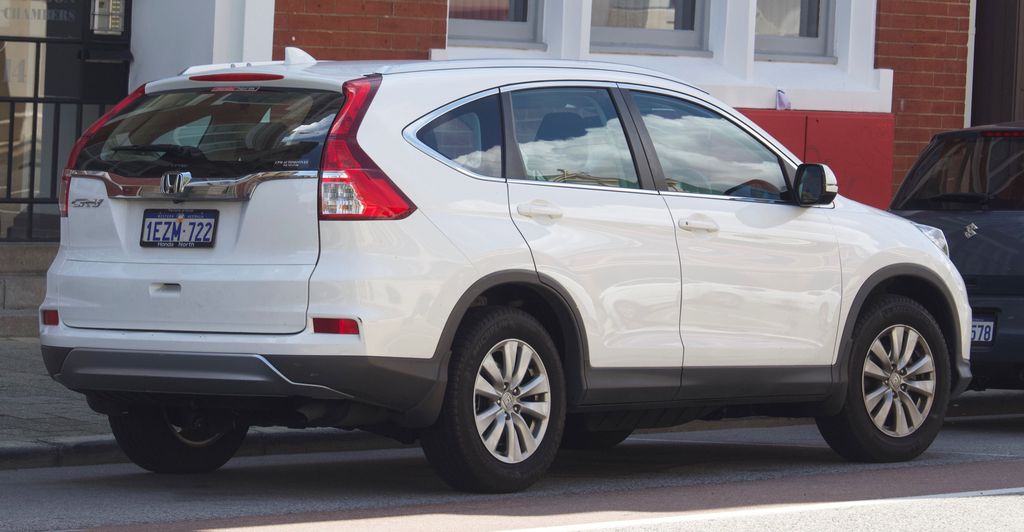
3. **Honda CR-V**When it comes to the Honda CR-V, its eventual prominence in the compact SUV segment wasn’t entirely out of left field, but the sheer scale of its success? That, my friends, absolutely blew past a multitude of forecasts. When it first hit the streets in the mid-1990s, compact SUVs were still finding their footing, a burgeoning trend catching on in North America and other crucial markets. The CR-V arrived as a seemingly sensible, practical, and fuel-efficient alternative to the behemoth SUVs of the era, offering the coveted higher seating position and ample cargo space without the cumbersome bulk and thirst for fuel of its traditional counterparts. Still, plenty of analysts scratched their heads, unsure if consumers would truly embrace a smaller SUV that drove more like a car, especially when pitted against the rugged, off-road warriors that then dominated the segment.
But here’s the kicker: the CR-V’s enduring triumph can be squarely attributed to its undeniable trifecta of versatility, unwavering reliability, and an irresistible value proposition. This wasn’t just another car; it was a smart choice. It delivered a remarkably smooth ride, a surprisingly spacious interior, and, let’s not forget, it came wrapped in Honda’s legendary reputation for engineering excellence. These were the ingredients that captivated a remarkably broad audience, spanning everyone from burgeoning small families navigating suburban jungles to urban commuters simply seeking a comfortable, elevated perch for their daily grind.
Over the years, Honda, ever the master of refinement, meticulously expanded the CR-V’s feature set. We saw the integration of advanced safety technology that made parents breathe a little easier, intuitive infotainment systems that kept everyone connected, and increasingly fuel-efficient powertrains that kept running costs in check. This relentless commitment to improvement ensured the CR-V remained not just relevant but utterly dominant in an intensely competitive market, solidifying its reputation as a dependable, economical choice that delivered consistent sales year after year, almost effortlessly.
One of the most potent secret weapons behind the CR-V’s sales explosion was its impeccable timing, riding the colossal wave of the crossover segment’s own explosive growth. As consumers increasingly moved away from traditional sedans and even bulky SUVs, prioritizing a perfect blend of utility and comfort, the CR-V found itself perfectly positioned to reap the rewards. It became the mainstream, no-brainer choice for anyone seeking a versatile everyday vehicle capable of handling everything from the mundane grocery run to adventurous weekend getaways. The CR-V’s undeniable success also lit a fire under other manufacturers, essentially kickstarting the industry-wide stampede to develop similar models, contributing directly to the compact crossover segment’s global proliferation.
Honda’s strategy of continuous refinement and an almost uncanny responsiveness to consumer feedback was absolutely paramount in keeping the CR-V not just competitive, but ahead of the pack. Whether it was through upgraded interior materials, even better fuel economy figures, or enhanced driver assistance features, Honda constantly evolved the CR-V to meet and exceed changing tastes. Its remarkable ability to maintain affordability without ever compromising on that signature Honda quality was absolutely crucial in preserving its broad, universal appeal. The CR-V’s outsized sales performance didn’t just cement its own legacy; it fundamentally redefined what consumers expected from compact SUVs and solidified its place as one of the most successful, most surprising models in automotive history.
Read more about: Unlocking the Secrets of Auto Theft: The 14 Most Common Ways Expensive Sports Cars and High-Value Vehicles Vanish in the U.S.
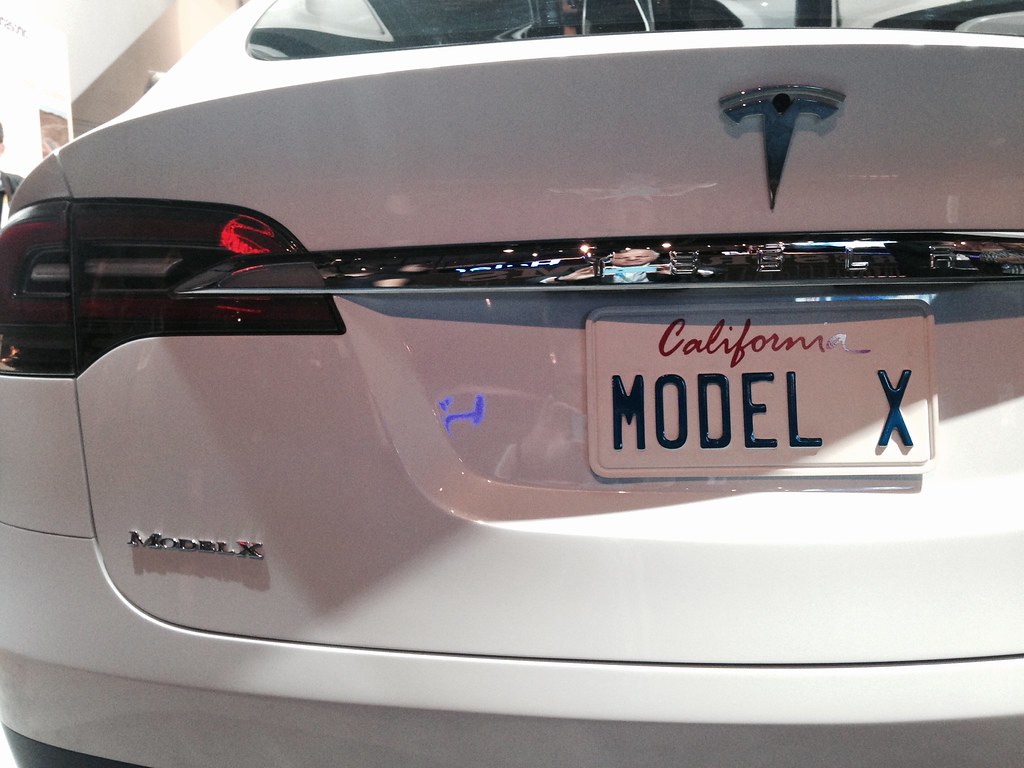
4. **Tesla Model 3**Tesla’s Model 3 wasn’t just another car launch; it was an automotive earthquake, arriving on the market with an almost unbearable cocktail of colossal anticipation and profound skepticism. For years, electric cars had been relegated to the fringes, seen by most as niche curiosities with woefully limited range, painfully slow charging, and price tags that made luxury sedans look like bargains. Tesla had, of course, already made seismic waves with its groundbreaking Roadster and the revolutionary Model S, but the Model 3? That was the big one, the audacious promise to bring legitimate, long-range electric vehicles (EVs) to the masses at a truly accessible price point. Expectations were wildly mixed: some hailed it as the inevitable revolution, while others scoffed, doubting Tesla could possibly scale production or achieve any meaningful sales volumes against the entrenched automotive giants.
What unfolded next wasn’t just a success story; it was one of the most utterly remarkable automotive sagas of the 21st century. The Model 3 didn’t just sell; it absolutely obliterated preorder records, steadily gaining an unstoppable traction among consumers desperately seeking a practical, long-range, and undeniably cool electric vehicle. Its magnetic appeal stemmed from a potent cocktail of cutting-edge technology, genuinely strong performance that could humble many gasoline cars, and a price point that made it a compelling alternative to traditional luxury sedans. This potent mix helped it capture buyers far beyond the usual early adopters, drawing in a completely new wave of electric curious.
Tesla’s innovative direct-to-consumer sales model, a radical departure from traditional dealerships, combined with its revolutionary over-the-air software updates, further cemented the Model 3’s unique allure. This wasn’t just buying a car; it was entering a unique, evolving ownership experience where your vehicle literally improved while you slept. The Model 3’s outsized sales triumph didn’t just highlight the power of innovation or brand strength; it unequivocally demonstrated consumers’ readiness, indeed their eagerness, to embrace genuinely new technology. It proved, beyond a shadow of a doubt, that electric vehicles could not only compete with, but often surpass, traditional cars on performance, range, and crucially, price. Tesla’s audacious ability to weave these factors into one compelling package resulted in a model that didn’t just sell well; it fundamentally redefined the very future of the automotive industry.
Beyond the raw numbers, the Model 3 sparked nothing short of a seismic shift in consumer attitudes towards electric mobility. It showcased, with undeniable flair, that electric cars could be desirable, practical, and genuinely accessible, utterly transforming the long-held, often negative, narrative around EV ownership. Tesla’s strategically built and ever-expanding Supercharger network played a pivotal role in alleviating the dreaded ‘range anxiety,’ making long-distance travel not just feasible but genuinely convenient for the average buyer. This was a critical piece of the puzzle, proving that EVs weren’t just for short city hops anymore.
Furthermore, the company’s brilliant emphasis on continuous software updates meant the Model 3 could literally improve and gain new features over time, keeping it competitive and fresh without demanding new hardware. This was a truly revolutionary approach that fundamentally contributed to the car’s sustained, almost legendary popularity. The Model 3’s unparalleled success wasn’t merely a significant factor; it was *the* major catalyst in accelerating the global transition toward electric transportation, proving that an American upstart could not only challenge, but lead, the world’s oldest manufacturing industry into a brighter, electrified future.
Car Model Information: 2025 Audi Q7 55 Premium Plus
Name: Tesla Model 3
Manufacturer: Tesla, Inc.
Production: 2017–present
Assembly: unbulleted list
Designer: Franz von Holzhausen
Class: Mid-size car
BodyStyle: Sedan (car)
Layout: unbulleted list
Related: Tesla Model Y
Motor: unbulleted list
Transmission: Single-speed fixed (9:1 ratio)
Battery: unbulleted list
ElectricRange: unbulleted list
Charging: unbulleted list
Wheelbase: cvt
Length: unbulleted list
Width: cvt
Height: unbulleted list
Weight: cvt
Caption: 2019 Tesla Model 3 Performance
Categories: 2020s cars, ANCAP large family cars, All-wheel-drive vehicles, All Wikipedia articles in need of updating, All Wikipedia articles written in American English
Summary: The Tesla Model 3 is a battery electric powered mid-size sedan with a fastback body style built by Tesla, Inc., introduced in 2017. The vehicle is marketed as being more affordable to more people than previous models made by Tesla. The Model 3 was the world’s top-selling plug-in electric car for three years, from 2018 to 2020, before the Tesla Model Y, a crossover SUV based on the Model 3 chassis, took the top spot. In June 2021, the Model 3 became the first electric car to pass global sales of 1 million.
A facelifted Model 3 with revamped interior and exterior styling was introduced in late 2023 for countries supplied by Gigafactory Shanghai and in early 2024 in North America and other countries supplied by the Tesla Fremont Factory.
Get more information about: Tesla Model 3
Buying a high-performing used car >>>
Brand: Tesla Model: Model 3
Price: $55,675 Mileage: 20,490 mi.
Read more about: The Unforgettable Missteps: 14 Vehicle Brands That Saw Their Trust Shatter in a Single Moment
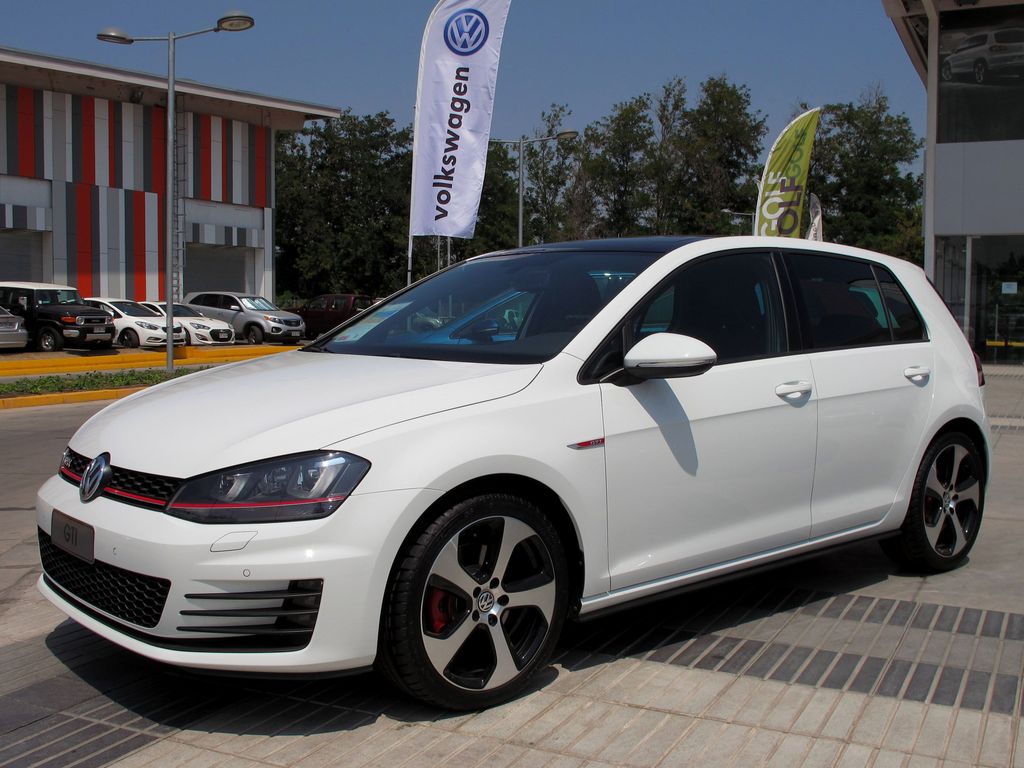
5. **Volkswagen Golf**The Volkswagen Golf, a name synonymous with compact car excellence, has been a steadfast staple of the global automotive market for decades. Yet, even with its almost ubiquitous presence and generations of loyal followers, the Golf consistently managed to outsell expectations throughout its storied history. Initially launched in the mid-1970s, it had the unenviable task of stepping into the massive shoes left by the iconic Beetle. But the Golf wasn’t intimidated; it brought a fresh, practical design philosophy to a rapidly expanding segment of consumers who were yearning for efficient, reliable, and intelligently packaged transportation. Its masterclass balance of compact size, peppy performance, and sheer practicality allowed it to resonate deeply with an incredibly diverse range of buyers across the globe.
One of the most profound reasons the Golf continually surpassed even Volkswagen’s own projections was the company’s unwavering commitment to relentless continual improvement and astute adaptation. With each successive generation, the Golf wasn’t just a minor refresh; it represented a genuine leap forward, bringing improved fuel efficiency, cutting-edge enhanced safety features, and smartly updated styling cues. This iterative brilliance allowed the Golf to remain not just relevant, but fiercely competitive, expertly navigating the ever-shifting tides of market tastes and the increasingly stringent global regulations. It was a vehicle that effortlessly catered not only to budget-conscious buyers seeking dependable daily transport but also, crucially, to passionate enthusiasts who craved sportier, more engaging trims like the legendary GTI and the high-performance R models, thus broadening its market appeal to an almost unparalleled degree.
Volkswagen’s truly global strategy also played an immense role in catapulting the Golf’s sales figures into the stratosphere. By manufacturing the Golf in multiple countries, Volkswagen ensured it was not only more affordable but also readily accessible in a myriad of diverse regions worldwide. Its hard-earned reputation for solid, no-nonsense German engineering, combined with its deeply practical features and user-friendly design, cemented its status as a favored choice among busy families, daily commuters, and driving enthusiasts alike. The Golf’s almost magical combination of everyday versatility and unyielding quality was the winning formula that allowed it to remain a consistent bestseller for decades on end, defying any notion of a ‘typical’ lifespan for a car model.
Adding another layer to its unexpected appeal was Volkswagen’s incredibly savvy marketing and the brilliant diversification of the Golf lineup. The sporty GTI, a pioneer of the hot-hatch segment, and the even more potent, high-performance Golf R variants, acted as magnets, drawing in driving enthusiasts and adding a dynamic, aspirational edge to the broader Golf brand. Simultaneously, the economical TDI diesel models, especially prevalent in Europe, offered astonishing fuel economy that appealed directly to the most cost-conscious drivers. Volkswagen also proved itself a trailblazer, embracing innovations such as intuitive touchscreen infotainment systems and advanced safety features earlier than many of its competitors, ensuring the Golf always felt modern, desirable, and ahead of the curve.
This exquisite blend of practicality, spirited performance, and thoughtful technological advancement allowed the Golf to not only maintain an incredibly competitive edge but also to consistently outsell initial predictions across a multitude of global markets. It’s a testament to a vehicle that somehow manages to be all things to all people, without ever losing its fundamental charm or its ability to surprise.
Car Model Information: 2018 Volkswagen e-Golf SE
Name: Volkswagen Golf
Caption: Volkswagen Golf Mk8
Manufacturer: Volkswagen
Production: 1974–present
Class: Compact car
Predecessor: Volkswagen Beetle
Successor: Volkswagen ID.3
Alt: grey car (hatchback)
Categories: 1980s cars, 1990s cars, 2000s cars, 2010s cars, 2020s cars
Summary: The Volkswagen Golf () is a compact car/small family car (C-segment) produced by the German automotive manufacturer Volkswagen since 1974, marketed worldwide across eight generations, in various body configurations and under various nameplates – including as the Volkswagen Rabbit in the United States and Canada (Mk1 and Mk5), and as the Volkswagen Caribe in Mexico (Mk1).
The original Golf Mk1 was a front-engined, front-wheel drive replacement for the air-cooled, rear-engined, rear-wheel drive Volkswagen Beetle. Historically, the Golf is Volkswagen’s best-selling model and is among the world’s top three best-selling models, with more than 35 million units sold as of 2019.
Initially, most Golfs were hatchbacks, with the three-door version being somewhat more popular than the five-door. Other variants include an estate (Variant, from 1993), convertible (Cabriolet or Cabrio, from 1979), and a Golf-based saloon called the Jetta, Vento (from 1992), or Bora (from 1999). The Golf covers economy to high-performance market segments.
The Golf has won awards, including the World Car of the Year in 2009, with the Mk6 and in 2013 with the Mk7. Along with the Renault Clio and the Vauxhall Astra, the Golf is one of only three cars to have won European Car of the Year twice, in 1992 and 2013. The Golf has made the annual Car and Driver 10Best list multiple times. The Mk7 won the Motor Trend Car of the Year award in 2015, and the Mk1 GTI also won the award in 1985. The Mk4 won for the best-selling car in Europe in 2001.
Get more information about: Volkswagen Golf
Buying a high-performing used car >>>
Brand: Volkswagen Model: Golf
Price: $14,499 Mileage: 35,058 mi.
Read more about: Unearthing Unexpected Value: 9 Economy Rides That Prove Affordability Doesn’t Mean Compromise
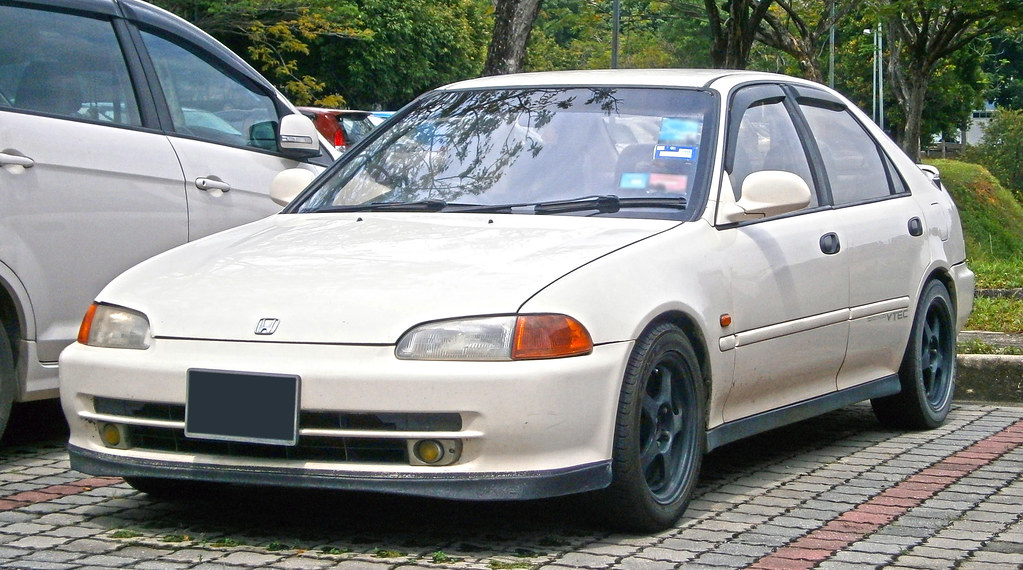
6. **Honda Civic**When you talk about compact cars that have achieved legendary status, the Honda Civic invariably springs to mind. It’s been one of the most enduringly successful and ubiquitous vehicles in automotive history, a testament to Honda’s brilliance. Yet, despite its steady, almost constant presence and an incredibly loyal following, the Civic has, time and again, repeatedly blown past sales expectations throughout its numerous generations, surprising even the most seasoned market observers. Launched way back in the early 1970s, the Civic didn’t just enter the market; it exploded onto it, quickly forging an unshakeable reputation for bulletproof reliability, astonishing fuel efficiency, and remarkable affordability.
At a time when the automotive market was still largely dominated by gargantuan, less efficient, and often overly ornate vehicles, the Civic presented a radically sensible and practical alternative. It appealed to a vast spectrum of consumers who were desperately seeking economical transportation that didn’t demand a sacrifice in quality or driving enjoyment. But what truly made the Civic’s rise so particularly exceptional was Honda’s almost uncanny ability to continually reinvent and reinvigorate the model, ensuring it not only kept pace with but often set the rhythm for evolving market trends and ever-changing consumer preferences. The car gracefully evolved from a bare-bones economy vehicle into an incredibly well-rounded, sophisticated compact car, effortlessly catering to the diverse needs of families, young drivers, and even hardcore enthusiasts alike.
The introduction of performance-oriented variants like the spirited Civic Si and the utterly track-focused Type R brought genuine performance credentials to the lineup, elevating the model far beyond the typical commuter car. This brilliant diversification attracted an incredibly diverse buyer base, from those simply needing reliable A-to-B transport to drivers seeking a genuinely thrilling experience. This almost magical ability to appeal simultaneously to both pragmatic buyers and those yearning for sportier, more engaging options was a crucial factor in the Civic’s ability to maintain consistently strong sales figures over literally decades, cementing its status as a perennial bestseller.
Honda’s unwavering commitment to technological advancements was another monumental factor in the Civic’s unstoppable success. From pioneering improvements in fuel efficiency through the ingenious introduction of VTEC engines to seamlessly integrating modern safety features and cutting-edge infotainment systems, the Civic consistently kept pace with, and often anticipated, consumer demands and tightening regulatory standards. Its legendary reputation for dependability, perfectly combined with its reasonable and accessible pricing, cemented its status as the undisputed go-to choice for first-time car buyers and anyone seeking supremely reliable daily transportation. This incredibly broad appeal almost routinely led to sales numbers that simply outpaced what analysts had initially dared to predict.
The Civic’s truly global reach further amplified its outsized success. Honda masterfully manufactured and marketed the Civic in a vast array of international markets, meticulously tailoring trims and features to precisely meet specific regional preferences and needs. This unparalleled flexibility, coupled with Honda’s robust dealer networks and its steadfast reputation for solid after-sales support, was instrumental in helping the Civic become a consistent, market-leading bestseller worldwide. Its exquisite balance of efficiency, comfort, and genuine driving enjoyment forged an unbeatable winning formula that very few competitors could ever hope to match, leading the Civic to regularly exceed sales expectations and etch its name into automotive history as a true icon.
Read more about: Unlocking the Secrets of Auto Theft: The 14 Most Common Ways Expensive Sports Cars and High-Value Vehicles Vanish in the U.S.
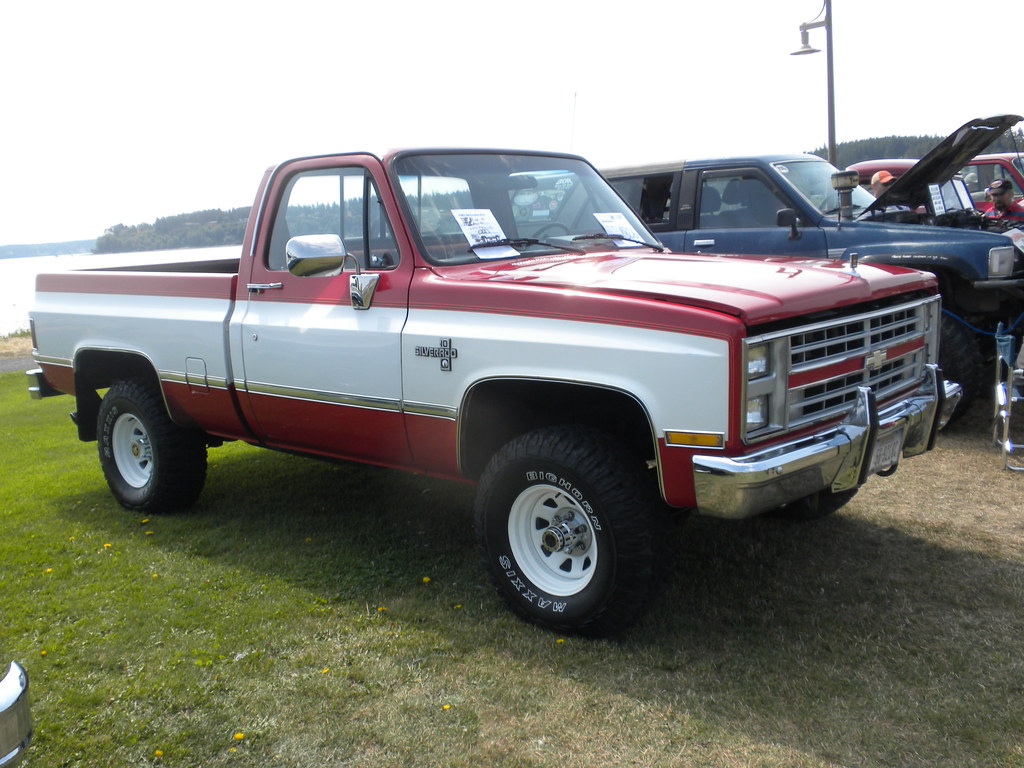
7. **Chevrolet Silverado**The Chevrolet Silverado isn’t just a truck; it’s a colossal cornerstone of the full-size pickup truck market, an almost mythical beast of burden and leisure. Yet, for all its undeniable might and widespread appeal, the Silverado’s sales achievements have, time and again, routinely surpassed even the most optimistic industry expectations, particularly as the fiercely competitive truck segment continued to swell. Introduced as a pivotal part of Chevrolet’s formidable lineup, designed to go toe-to-toe with other American pickup legends, the Silverado offered an irresistible blend of raw power, unparalleled versatility, and down-to-earth affordability. This potent combination made it immensely appealing to a broad, diverse swath of customers, from hardworking contractors on muddy job sites to bustling families navigating weekend errands, and outdoor enthusiasts hauling gear to their next adventure. The Silverado, almost instantly, carved out an unassailable foothold in the American psyche.
One of the most significant engines driving the Silverado’s outsized success was Chevrolet’s unyielding commitment to its consistent evolution – a relentless pursuit of perfection in design, technology, and sheer capability. Chevrolet poured immense resources into continually updating the Silverado, equipping it with ever more powerful engines, dramatically improved towing capacities that could yank almost anything, and enhanced comfort features that made long hauls feel like a cruise. This delicate yet powerful balance between work-ready toughness and genuine everyday usability was a magnet for buyers. They needed a vehicle that could tackle the most demanding heavy-duty tasks without forcing them to sacrifice modern conveniences or the creature comforts of a well-appointed cabin. The Silverado transcended mere utility; for countless owners, it became a full-fledged lifestyle vehicle.
The Silverado’s commanding performance in the sales arena was also significantly bolstered by the expanding pickup market itself. As pickup trucks underwent a fascinating transformation, morphing from purely commercial or utility workhorses into increasingly popular personal use vehicles, Chevrolet masterfully capitalized on this burgeoning trend. Their ability to offer a dizzying array of trims and configurations allowed them to capture virtually every conceivable buyer segment. From rugged, no-frills entry-level models perfectly suited for basic hauling to luxurious, amenity-laden trims equipped with every premium feature imaginable, the Silverado effortlessly catered to an astonishingly wide range of needs and budgets. This unparalleled flexibility was instrumental in helping the model consistently outsell expectations, especially as pickup trucks solidified their position as one of the fastest-growing and most profitable vehicle categories in the U.S.
Chevrolet’s formidable dealer network and its deeply ingrained brand loyalty also played absolutely crucial roles in cementing the Silverado’s sales triumph. The model’s unimpeachable reputation for durability, its legendary toughness, and its remarkably strong resale value made it a trusted, almost automatic choice among discerning consumers, effectively reinforcing its dominant market position year after year. Aggressive, smart marketing campaigns and a steady stream of regular updates designed to keep the Silverado perpetually fresh helped sustain both widespread interest and its unstoppable sales momentum over many, many years. The Silverado’s outsized performance was, in essence, a direct reflection of both its intrinsic, bulletproof qualities and the broader, undeniable cultural trends favoring trucks, unequivocally cementing its place as one of America’s best-selling and most surprising vehicles.
Adding further layers to its already impressive success was Chevrolet’s proactive responsiveness to continually shifting customer demands. The Silverado embraced, with open arms, advancements in fuel efficiency, cutting-edge driver-assistance technologies, and seamless connectivity features, all of which were vital in keeping it fiercely competitive in what rapidly became a crowded and cutthroat segment. It also expertly kept pace with evolving styling trends, ensuring the truck consistently looked modern, imposing, and undeniably appealing to a vast, broad audience. The Silverado’s unique ability to blend rugged, unyielding strength with refined, thoughtful comfort was a powerful draw, extending its appeal far beyond traditional truck buyers and boosting sales far beyond initial, conservative expectations. It truly proved that a truck could be both a workhorse and a status symbol, an unbeatable combination.
Car Model Information: 2021 Chevrolet Silverado 1500 RST
Name: Chevrolet Silverado/GMC Sierra
Caption: 2022 Silverado 2500HD High Country
Manufacturer: General Motors
Aka: unbulleted list
Production: 1998–present
Assembly: unbulleted list
Class: unbulleted list
BodyStyle: unbulleted list
Layout: unbulleted list
Predecessor: unbulleted list
Categories: 2000s cars, 2010s cars, 2020s cars, All-wheel-drive vehicles, All Wikipedia articles written in American English
Summary: The Chevrolet Silverado is a range of trucks manufactured by General Motors under the Chevrolet brand. Introduced for the 1999 model year, the Silverado is the successor to the long-running Chevrolet C/K model line. Taking its name from the top trim level from the Chevrolet C/K series, the Silverado is offered as a series of full-size pickup trucks, chassis cab trucks, and medium-duty trucks. The fourth generation of the model line was introduced for the 2019 model year.
The Chevrolet Silverado shares mechanical commonality with the identically related GMC Sierra; GMC ended the use of the C/K nomenclature a model generation prior to Chevrolet. In Mexico, high-trim level versions of the Silverado use the Chevrolet Cheyenne name (not to be confused with the 2003 concept). Competing against the Ford F-Series, Ram pickup, Toyota Tundra, and Nissan Titan, the Silverado is among the best-selling vehicles in the United States, having sold over 12 million trucks since its introduction in 1998 as a 1999 model year.
Get more information about: Chevrolet Silverado
Buying a high-performing used car >>>
Brand: Chevrolet Model: Silverado
Price: $39,977 Mileage: 44,142 mi.
Read more about: Unlocking the Secrets of Auto Theft: The 14 Most Common Ways Expensive Sports Cars and High-Value Vehicles Vanish in the U.S.
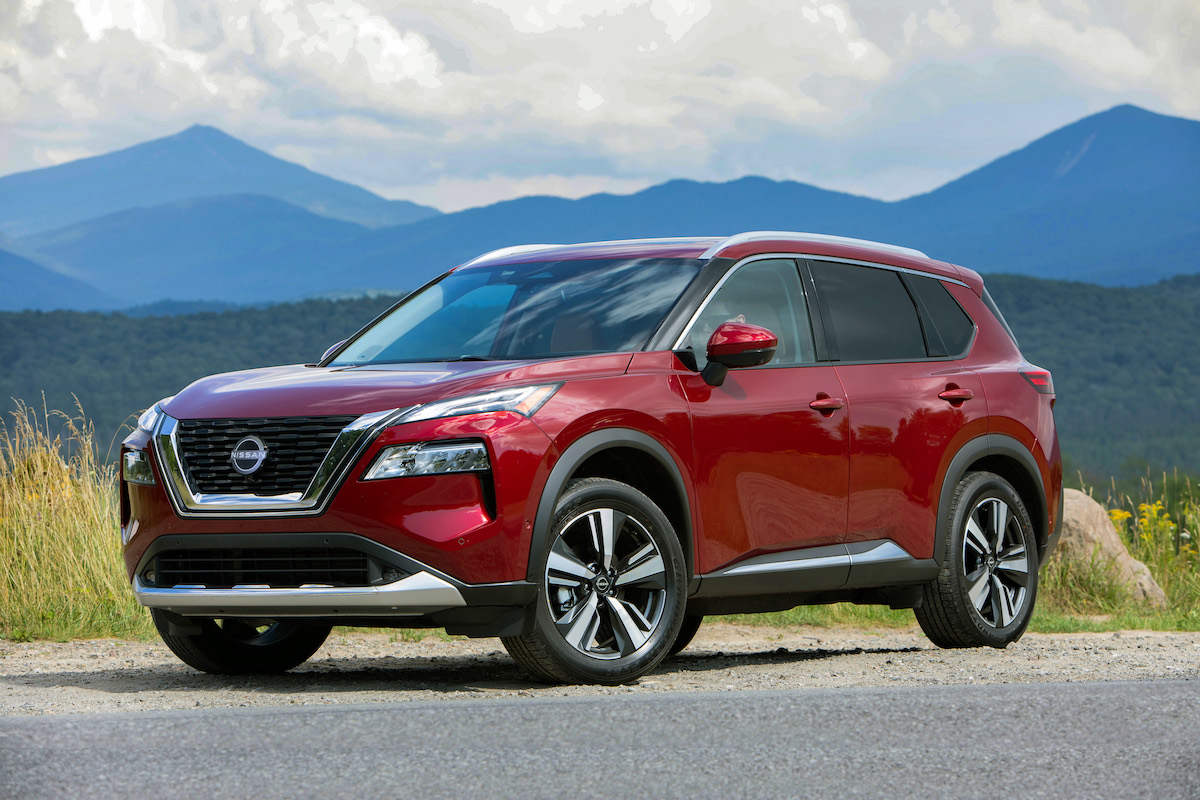
8. **Nissan Rogue**The Nissan Rogue emerged as an undeniable standout in the compact SUV segment, a fiercely contested arena where countless manufacturers are constantly vying for consumer attention. Despite this brutal competition, the Rogue didn’t just survive; it thrived, often rocketing past sales expectations thanks to a brilliant combination of strategic positioning and a perfectly balanced suite of features. This wasn’t just another contender; it was a genuinely smart play from Nissan.
The Rogue shrewdly appealed to a broad spectrum of buyers, offering far more than just your run-of-the-mill transportation. Its unexpectedly spacious interior, intuitive technology, and a remarkably smooth ride made it an incredibly compelling option for everyone from growing families wrestling with school runs to urban dwellers seeking a comfortable and elevated daily driver. Nissan’s relentless focus on paramount safety features and commendable fuel efficiency further cemented its irresistible appeal, making it a no-brainer for countless consumers.
Crucially, a major factor behind the Rogue’s outsized sales success was its impeccable timing. It sashayed onto the scene just as compact crossovers were exploding in popularity, effortlessly capturing buyers who were eagerly transitioning away from traditional sedans but weren’t quite ready for the bulk of a larger SUV. The Rogue offered an accessible, almost perfectly pitched entry point into the SUV segment, combining car-like handling with the undeniable utility of a crossover. This potent mix resonated deeply, helping Nissan blow past even its most optimistic sales predictions.
Beyond the mere hardware, the Rogue’s astute marketing and brilliant positioning cultivated an image of rock-solid reliability and cutting-edge modernity. It skillfully attracted a younger, more design-conscious demographic while never alienating the families who craved its space and comfort. This harmonious blend of technology, efficiency, and undeniable style allowed the Rogue to stand head and shoulders above its rivals, and coupled with the surging demand for SUVs and crossovers, it consistently exceeded expectations, becoming one of Nissan’s undisputed global bestsellers.
Car Model Information: 2021 Nissan Rogue SL
Name: Nissan Rogue
Caption: 2023 Nissan Rogue SV (US)
Manufacturer: Nissan
Aka: Nissan X-Trail
Production: 2007–present
ModelYears: 2008–present
Class: Compact crossover SUV
BodyStyle: SUV
Layout: Front-engine, front-wheel-drive layout
Predecessor: Unbulleted list
Categories: 2010s cars, All-wheel-drive vehicles, All articles lacking reliable references, Articles lacking reliable references from November 2017, Articles with short description
Summary: The Nissan Rogue is a compact crossover SUV produced by the Japanese automobile manufacturer Nissan. It made its debut in October 2007 for the 2008 model year. Beginning in 2013 for the 2014 model year, the model has been merged with the X-Trail sold outside the North American market, making them identical.
As of 2023, the Rogue was manufactured at the Nissan Smyrna Assembly Plant in Tennessee, United States and at the Nissan Motor Kyushu plant in Kanda, Fukuoka, Japan. Between August 2014 and March 2020, it was also built at the Renault Samsung Motors plant in Busan, South Korea under contract.
Get more information about: Nissan Rogue
Buying a high-performing used car >>>
Brand: Nissan Model: Rogue
Price: $20,699 Mileage: 60,669 mi.
Read more about: Remember These? 13 Rides That Went From Sought-After to Stale.
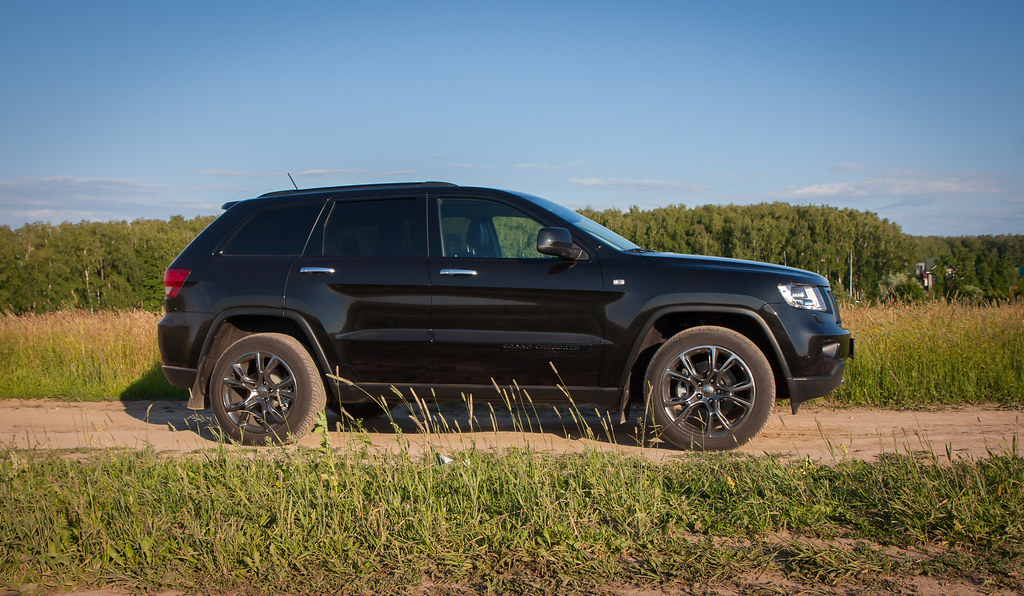
9. **Jeep Grand Cherokee**The Jeep Grand Cherokee has always been a formidable flagship in the legendary Jeep lineup, but its sales achievements have, more often than not, spectacularly surpassed even the most bullish forecasts. Why? Because the Grand Cherokee masters an almost impossible duality: it’s a glorious blend of unapologetically rugged capability and surprisingly upscale refinement, a combination that truly resonates with drivers who want to have their cake and eat it too.
When it first rolled out, the Grand Cherokee boldly positioned itself as a mid-size SUV that could not only laugh in the face of tough off-road conditions but also pamper its occupants with comfort and luxury features typically reserved for much pricier vehicles. This brilliant two-faced personality allowed the Grand Cherokee to snag an incredibly diverse range of buyers, extending far beyond the traditional, hardcore Jeep enthusiast who typically lived for dirt trails.
The Grand Cherokee’s almost uncanny ability to balance genuine off-road prowess with impeccable on-road comfort was a monumental factor in its unexpected sales strength. Buyers absolutely adored that this vehicle could fearlessly conquer rough terrain, yet simultaneously provide a whisper-quiet, incredibly comfortable ride for the mundane daily commute. Jeep’s shrewd investment in advanced four-wheel-drive systems, potent engine options, and genuinely upscale interiors ensured the Grand Cherokee captivated both the adventurous spirit and the practical family driver.
The broader, unyielding popularity of SUVs and crossovers naturally gave the Grand Cherokee’s sales trajectory a significant boost. As consumers steadily ditched sedans for more versatile machines, Jeep, ever the opportunist, capitalized on this burgeoning trend by continually updating the Grand Cherokee with cutting-edge modern technology, advanced safety features, and increasingly efficient engines. This constant evolution ensured the Grand Cherokee remained ferociously competitive, consistently outselling its initial projections and proving that a rugged badge could also mean luxury.
Car Model Information: 2025 Audi Q7 55 Premium Plus
Name: Jeep Grand Cherokee
Manufacturer: Jeep
Production: 1992–present
ModelYears: 1993–present
Class: unbulleted list
BodyStyle: sport utility vehicle
Layout: unbulleted list
Chassis: Vehicle_frame#Uniframe
Categories: 2000s cars, 2010s cars, 2020s cars, All-wheel-drive vehicles, All Wikipedia articles written in American English
Summary: The Jeep Grand Cherokee is a range of mid-sized sport utility vehicles produced by American manufacturer Jeep. At its introduction, while most SUVs were still manufactured with body-on-frame construction, the Grand Cherokee has used a unibody chassis from the start.
Get more information about: Jeep Grand Cherokee
Buying a high-performing used car >>>
Brand: Jeep Model: Grand Cherokee
Price: $55,675 Mileage: 20,490 mi.
Read more about: Remember These? 13 Rides That Went From Sought-After to Stale.

10. **Subaru Outback**The Subaru Outback, when it first ventured onto the market, was seen as something of an anomaly, a quirky niche vehicle that brilliantly fused wagon practicality with a healthy dose of off-road capability. Many seasoned industry observers, and let’s be honest, a few skeptics, openly questioned whether this unique crossover-wagon hybrid could possibly find a substantial audience, given its unconventional positioning somewhere between traditional SUVs and conventional cars. It was a bold move, indeed.
However, the Outback’s meteoric rise to popularity not only met but absolutely obliterated these early assumptions, cementing its status as one of Subaru’s undisputed flagship models and a genuine standout in the crowded crossover market. The secret sauce? Its deeply unique appeal to buyers who craved the utility and commanding presence of an SUV but absolutely refused to tolerate the cumbersome bulk and often inefficient nature of a larger vehicle.
With its surprisingly spacious interior, the legendary symmetrical all-wheel-drive system (a Subaru hallmark), and just enough rugged styling to look the part, the Outback effortlessly captivated outdoor enthusiasts, bustling families, and pragmatic commuters alike. It quickly earned a reputation as an incredibly versatile vehicle, capable of gracefully navigating everything from congested urban streets to snow-laden mountain trails, making it an indispensable choice, particularly in regions prone to varied and challenging climates.
Subaru’s unwavering, almost fanatical commitment to safety and bulletproof reliability further propelled the Outback’s irresistible appeal. The meticulous inclusion of advanced driver assistance features, consistent stellar crash-test ratings, and its deeply ingrained reputation for unparalleled durability made it an almost automatic, trusted choice. This harmonious blend of rugged capability and invaluable peace of mind deftly attracted buyers who might otherwise have gravitated towards more traditional SUVs, allowing Subaru to carve out an incredibly distinctive and profitable market niche.
The Outback’s relentless ascent in popularity was also inextricably linked to the ever-shifting sands of consumer preferences. As more and more drivers actively sought vehicles that masterfully offered both unquestionable practicality and undeniable lifestyle appeal, the Outback found itself perfectly placed to ride this powerful trend. Its uncanny ability to seamlessly blend car-like handling with SUV-like capability, effectively created and then dominated, a segment that Subaru quite literally owned. Continuous, thoughtful updates to its technology, an unwavering focus on interior quality, and ever-improving fuel efficiency ensured the model remained perpetually fresh, fiercely competitive, and endlessly desirable.
Car Model Information: 2013 Subaru Outback 2.5i Limited
Name: Subaru Outback
Caption: 2023 Subaru Outback Premium
Manufacturer: Subaru
Production: 1994–present
ModelYears: 1995–present
Assembly: Ota, Gunma
Aka: Subaru Legacy
Class: Mid-size car
BodyStyle: station wagon
Categories: All Wikipedia articles written in American English, All articles with unsourced statements, Articles containing Japanese-language text, Articles with short description, Articles with unsourced statements from April 2012
Summary: The Subaru Outback is an automotive nameplate used by the Japanese automaker Subaru for two different themed vehicles: a Legacy-derived station wagon, the Outback (1994–present, also sold as Legacy Outback (Japanese: スバル・レガシィアウトバック, Hepburn: Subaru Regashi Autobakku) in some markets), and an Impreza-derived off-road themed hatchback, the Outback Sport (1994–2011).
Most versions of the Outback wagon and Outback Sport have had all-wheel drive as standard equipment.
Get more information about: Subaru Outback
Buying a high-performing used car >>>
Brand: Subaru Model: Outback
Price: $7,795 Mileage: 175,533 mi.
Read more about: Seriously Where Did They Go? 9 Classic Sedans That Vanished From Our Streets.

11. **Mazda MX-5 Miata (1989)**Let’s be brutally honest: by the late 1980s, the affordable, fun-to-drive convertible was about as relevant as a fax machine. The sports car market had bloated, grown complicated, and priced itself out of reach for most enthusiasts who just wanted to feel the wind in their hair without needing a second mortgage. Enter Mazda, quietly, almost demurely, dropping a bombshell that nobody, absolutely nobody, saw coming.
The MX-5 Miata wasn’t just a car; it was a defiant middle finger to automotive bloat. It arrived in 1989 with a simple, elegant recipe: sleek, unfussy curves, a light curb weight, and a chassis so perfectly balanced it felt like an extension of your own nervous system. This wasn’t about raw power or dizzying top speeds; it was about pure, unadulterated driving joy, delivered with surgical precision.
Skeptics, naturally, scoffed. A Japanese roadster? In this economy? But the Miata quickly silenced them, becoming a surprise bestseller not just in its home market, but across the globe. It proved, definitively, that there was a hungry audience for simple, honest fun on four wheels. It eschewed unnecessary complexity for the visceral thrill of a perfectly executed corner.
Its accessible price point was an absolute masterstroke, opening up the world of sports car ownership to a generation previously shut out. The Miata didn’t just sell; it became a phenomenon, a rallying cry for drivers who believed that less could truly be more. By 2000, it had cemented its legacy, becoming the best-selling two-seat sports car in history, a testament to its enduring appeal and its profound impact on what we thought a sports car could be. Mazda’s unassuming little roadster reshaped an entire segment, proving that sometimes, the greatest surprises come in the smallest, most grin-inducing packages.
Car Model Information: 2025 Audi Q7 55 Premium Plus
Name: Mazda MX-5
Manufacturer: Mazda
Aka: unbulleted indent list
Production: 1989–present
Assembly: Hiroshima
Class: Roadster (car),sports car
Layout: unbulleted indent list
Platform: List of Mazda model codes#Model codes
Categories: 1990s cars, 2000s cars, 2010s cars, 2020s cars, All Wikipedia articles in need of updating
Summary: The Mazda MX-5 is a lightweight two-seat sports car manufactured and marketed by Mazda. In Japan, it is marketed as the Mazda Roadster or, previously, as the Eunos Roadster. In the United States it is sold as the Mazda Miata (), and it was formerly marketed under the same name in Canada. The name miata derives from Old High German for “reward”.
Produced at Mazda’s Hiroshima plant, the MX-5 debuted in 1989 at the Chicago Auto Show. It was created under the design credo Jinba ittai, meaning “unity of horse and rider”. Noted for its small, light, balanced and minimalist design, the MX-5 has often been described as a successor to the 1950s and 1960s Italian and British roadsters, with the Lotus Elan serving as a design benchmark.
Each generation is identified by a two-letter code, beginning with the first generation NA. The second generation NB launched in 1998, followed by the third generation NC in 2005, and the fourth generation ND in 2015.
More than one million MX-5s have been sold, making it the best-selling two-seat convertible sports car in history.
Get more information about: Mazda MX-5
Buying a high-performing used car >>>
Brand: Mazda Model: MX-5 Miata
Price: $55,675 Mileage: 20,490 mi.
Read more about: These 16 Iconic Cars Completely Revolutionized The Industry

12. **Jaguar E-Type (1961)**Jaguar, a name already steeped in automotive grace, had a secret weapon lurking in its Coventry workshops in the early 1960s. When the E-Type finally burst onto the scene in 1961, the company, in typical British understatement, merely anticipated “modest success.” Oh, how wrong they were, and oh, how gloriously the world proved them so. This wasn’t just another car; it was a shot fired across the bow of automotive design, echoing around the globe.
From the moment its impossibly long bonnet and sensuously sculpted flanks were revealed, the E-Type didn’t just turn heads; it shattered expectations of what a car could look like. It was automotive art in motion, a flowing sculpture of speed and desire. Legend has it, even the notoriously critical Enzo Ferrari, a man who knew a thing or two about beautiful cars, proclaimed it “the most beautiful car ever made.” When *that* guy is handing out compliments, you know you’ve done something profoundly right.
But the E-Type was far more than just a pretty face. Beneath that breathtaking skin lay a thrilling beast of performance. Its straight-six engine roared with a gentlemanly ferocity, propelling it to speeds that were utterly mind-bending for the era. This was British engineering at its absolute pinnacle, a masterclass in blending raw power with an effortless, sophisticated elegance that defined automotive grace worldwide. It drove as beautifully as it looked.
The E-Type wasn’t just a hit; it was an unexpected superstar that single-handedly transformed Jaguar’s reputation overnight. It became legendary not just for its looks or its speed, but for its audacious ability to combine both into an almost impossibly desirable package. It reminded the world that while performance was king, style was royalty, and the E-Type wore its crown with an unrivaled, timeless majesty. It was a cultural icon, defying all expectations and setting an impossible standard for generations of sports cars to follow.
Read more about: Everyone Wants These 14 Classic Cars In Their Garage: A Deep Dive for Enthusiasts

13. **AMC Eagle (1980)**Before every parking lot was saturated with a million bland crossovers, before the automotive industry even truly grasped what a crossover *was*, there was the AMC Eagle. It landed in 1980 like a strange, feathered creature from an alternate dimension, a truly bold and utterly unconventional move by American Motors. Let’s be clear: this wasn’t just ahead of its time; it was practically from another planet entirely.
The concept itself was revolutionary, almost hilariously so to the jaded critics of the day. AMC dared to blend the comfort and handling of a passenger car with the rugged, go-anywhere capabilities of an SUV, all wrapped in a decidedly un-glamorous, often “quirky” package. Predictably, eyebrows were raised so high they nearly touched the ceiling. A car on stilts? With four-wheel drive? What madness was this?
But here’s the kicker: the Eagle wasn’t just a novelty; it won hearts and, crucially, wallets through its undeniable versatility and, perhaps most surprisingly, its rock-solid reliability. It offered a practical solution for folks who needed genuine all-weather traction and light off-road capability but didn’t want the monstrous fuel bills or truck-like ride of a traditional SUV. It was the perfect vehicle for navigating snowy driveways or gravel roads with car-like ease.
This unassuming, unexpectedly popular “oddball” wasn’t just a momentary sales blip. The AMC Eagle, in its own idiosyncratic way, pioneered the very concept of what we now take for granted as the modern crossover craze. It proved, beyond a shadow of a doubt, that AMC’s gamble was not just astute, but genuinely decades ahead of its time. It’s a testament to thinking outside the box, even if that box sometimes looked a bit… elevated. The Eagle carved out its own unique and undeniable legacy, proving that true innovation often comes from the most unexpected corners.
Read more about: Were the Editors Asleep? 12 Jaw-Dropping Film Fails That Sneaked Onto the Big Screen, From Ancient Rome to a Galaxy Far, Far Away!

14. **Mazda RX-7 FD (1992)**Let’s face it, the rotary engine was always a bit of an automotive enigma, a glorious but often misunderstood engineering marvel. Many, including more than a few folks within Mazda’s own ranks, genuinely doubted whether this unique engine configuration could ever truly thrive in a mass-market performance car. It was quirky, thirsty, and demanding. Then, in 1992, the Mazda RX-7 FD burst onto the scene, not just thriving, but screaming its rotary heart out, instantly challenging every preconceived notion about what a sports car could be.
This wasn’t just a car; it was a revelation, a sleek, seductive sculpture of speed. Its aerodynamic lines and impossibly low stance were pure automotive pornography, a design that still looks fresh and utterly breathtaking today. But its true magic lay beneath the skin: the RX-7 FD boasted razor-sharp handling that silenced skeptics instantly. It was a driver’s car in the purest sense, communicating every nuance of the road with telepathic precision, begging to be pushed harder through every apex.
And then there was *that sound*. The unique, almost turbine-like buzz of its twin-turbocharged Wankel rotary engine was unlike anything else on the road, a high-pitched mechanical symphony that announced its arrival with an unmistakable signature. This distinctive character, combined with its head-turning looks and exhilarating performance, quickly earned global admiration, captivating enthusiasts and casual observers alike. It wasn’t just fast; it was exotic, a true outlier in a world of conventional piston engines.
The RX-7 FD didn’t just meet Mazda’s hopes; it blew them clean out of the water. It transcended mere automotive excellence to become a bona fide 1990s performance icon, reshaping and redefining what a Japanese sports car could achieve. Its legacy continues to echo through the halls of automotive legend, a testament to Mazda’s audacious commitment to a unique engine and a pure driving experience. The FD wasn’t just superior; it was a defiant, rotary-powered masterpiece that left an indelible mark on generations of gearheads.
Car Model Information: 1989 Mazda RX-7
Name: Mazda RX-7
Caption: 1994 Mazda RX-7 R2 (FD3S)
Manufacturer: Mazda
Aka: Mazda Savanna RX-7 (Japan, 1978–1991),Mazda ɛ̃fini RX-7 (Japan, 1991–1997)
Class: Sports car
Production: 1978–2002,811,634 produced
Assembly: Hiroshima
Platform: Mazda F platform
Layout: Front-engine, rear-wheel-drive layout#Front mid-engine, rear-wheel-drive layout
Predecessor: Mazda RX-3
Successor: Mazda RX-8
Categories: 1980s cars, 1990s cars, 2000s cars, 24 Hours of Le Mans race cars, All Wikipedia articles written in British English
Summary: The Mazda RX-7 is a sports car which was manufactured and marketed by Mazda from 1978 to 2002 across three generations. It has a front mid engine, rear-wheel-drive layout and uses a compact and lightweight Wankel rotary engine.
The first-generation RX-7, codenamed SA (early) and FB (late), is a two-seater coupé with a rear hatchback. It featured a 12A carbureted rotary engine as well as the option for a 13B rotary engine with electronic fuel injection in later years. The second-generation RX-7, carrying the internal model code FC, was offered as a two-seater coupé with a 2+2 option available in some markets, as well as in a convertible body style. This was powered by the 13B rotary engine, offered in naturally aspirated or turbocharged forms. The third-generation RX-7, model code FD, was offered as a two-seater coupé with a 2+2 version offered as an option for the Japanese market. It featured a sequentially turbocharged 13B REW engine.
More than 800,000 RX-7s were manufactured over its lifetime.
Get more information about: Mazda RX-7
Buying a high-performing used car >>>
Brand: Mazda Model: RX-7
Price: $14,998 Mileage: 88,741 mi.
Read more about: Timeless Legends: 15 Classic Cars from the 60s and 70s That Deserve a Modern MotorTrend Revival.
So there you have it: a whirlwind tour through the automotive industry’s greatest curveballs, cars that didn’t just hit the ball, but knocked it clear out of the park when no one was looking. From humble hybrids that sparked a green revolution to audacious off-roaders and purebred sports cars that defied the odds, these machines prove one undeniable truth: the automotive world is a wild, unpredictable beast. It’s where passion, ingenuity, a dash of madness, and sometimes just perfect timing, conspire to create legends. These aren’t just vehicles that sold well; they’re stories of defiance, innovation, and the sheer joy of proving everyone wrong. They remind us that even in an industry obsessed with forecasts and trends, true greatness often comes from the most unexpected places, leaving an indelible mark on asphalt, and on our hearts. Keep your eyes peeled, because the next unassuming legend might just be rolling off the assembly line right now, ready to shock us all over again.



